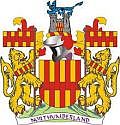I am not an expert on small block engines so I will leave others to fill in the details. However I will tell you a few things if I may?
You cannot tell what heads you have by the J or X. This is a foundry reference and has no bearing on the head itself. Many 340/360/T/A engines have one of each on them! go by the casting numbers not the letter. (Thanks to Alex for teaching me that).
Also some 360 heads were identical to the 340 head. Casting number 3418915 for example has the big 2.02 intake valve I think?
I guess what your guy was saying is that it is easy to replace your 1.88 intake valve with the 2.02 because both versions of the 340/360 head had the same intake runners and ports so it is just a case of making the valve seat bigger.
The LA engine was cast with as little metal as possible to keep it light. That is what the 'L' in 'LA' stands for.
The thinner the cylinder wall the more power you will loose due to flex in the wall and poor piston ring seal. NEVER bore the cylinder oversize unless you have to and then only bore what you need. Most common aftermarket pistons are 30 thou oversize so normally you would fit those but if you can find 20thou use those instead.
To make the cylinders as good a fit as possible you should use a torque plate when the engine is being machined. This is a thick metal plate (like a one inch thick head gasket) that bolts on in place of the cylinder head. When the head bolts are tight the cylinder wall will warp slightly. So getting the cylinder machined with the plate in place will make it perfectly round when you bolt your heads on.
Not sure I was very clear there.

Also you buy the pistons first and then get the block machined to the correct bore for the pistons you have. This is because diffferent piston types require different amounts of clearence.
Have a look at
http://www.hughesengines.com/ for prices on cranks and pistons. Also check out the complete long blocks and stroker kits.
